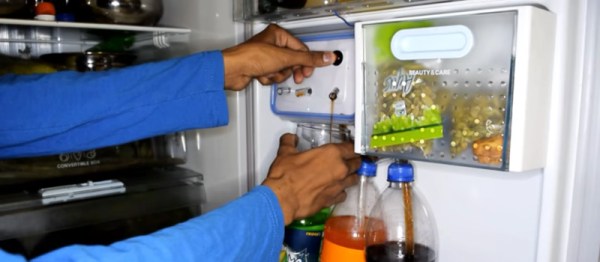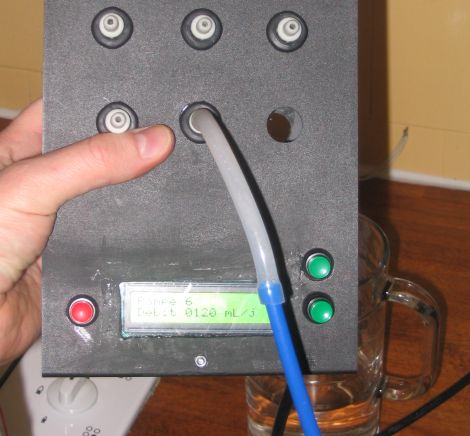Who doesn’t love an ice cold soda? Lots of people, probably. This one’s not for them. It’s for those of us that are tired of having to go through the arduous process of manually opening a bottle and pouring a drink. Wouldn’t it be cool if you could have your own soda fountain at home? [Kedar Nimbalkar] thought so, and built a soda fountain that you can install right inside a fridge.
The system is based around using small pumps marketed as “6V DC air pumps” on Amazon. [Kedar] uses an indirect method of pumping the soda in this project. It’s a sad fact that it’s hard to find a cheap pump that’s safe to use with fluids for human consumption, and on top of that, many types of pump out there aren’t self-priming. This means the pump needs to be charged with fluid to work, which can make changing empty bottles a real pain.
Instead of pumping the fluid directly, the pumps instead push air into the top of the sealed soda bottles, which forces soda out of another tube in the bottle. This means that the pumps themselves don’t have direct contact with the soda which is a great design when working with stuff you’re going to put in your body. Following on from this careful design, the tubing selected is food safe. Unfortunately, even though the pumps don’t directly touch the soda itself, it’s highly unlikely the pumps chosen (designed for aquariums) are genuinely food-safe themselves.
When you’re building a beer funnel setup for Australia Day/4th of July/Other, using all manner of industrial or agricultural fittings may be a relatively low risk, as it’s a one-off exposure. But if you’re building a system handling products for human ingestion that you’re using on a regular basis, you really do want to make sure that the parts you use aren’t slowly poisoning you. There’s many ways this can happen — parts may corrode or react with substances in the food, plastics may outgas, or there may be lubricants in the parts that have toxic compounds in them. Just look what can happen if you drink wine out of a gun barrel — and that was from a single exposure!
Overall it’s a cool project, and one that would be especially fun and educational to do with children. Young humans are well known for their predilection towards sugary beverages, and have minds ready to be filled with knowledge about pumps, safe food handling practices, and of course, electronics. We also like [Kedar]’s use of commonly available materials, like a plastic food container for the enclosure. The project would be a great starter on your way to building a more complicated cocktail-mixing barbot. Video after the break.
We know peristaltic pumps are the go-to for safe liquid pumping. Anyone know a hacker friendly way of pumping air while ensuring all parts of the system are food safe? The most creative solution we’ve seen is to use breast pumps but it wasn’t ideal. Let us know your own tricks in the comments!
Continue reading “Build Your Own In-Fridge Soda Fountain” →













